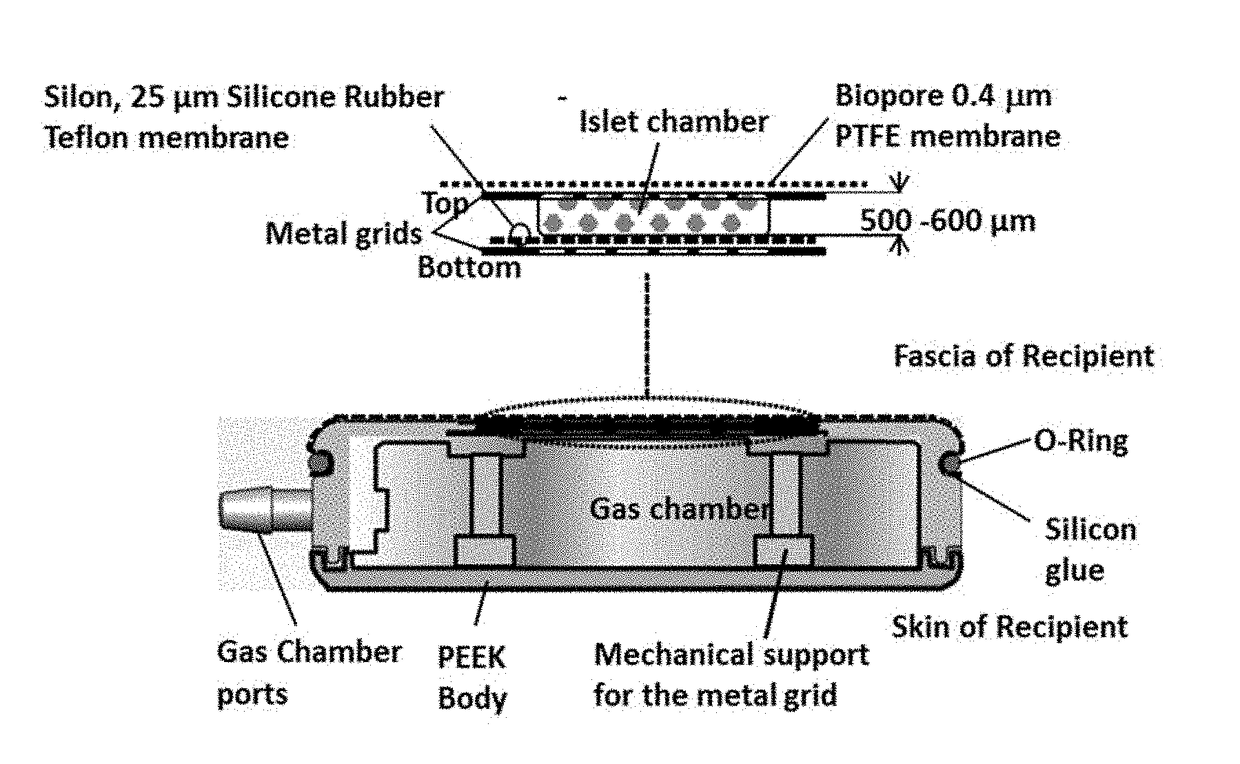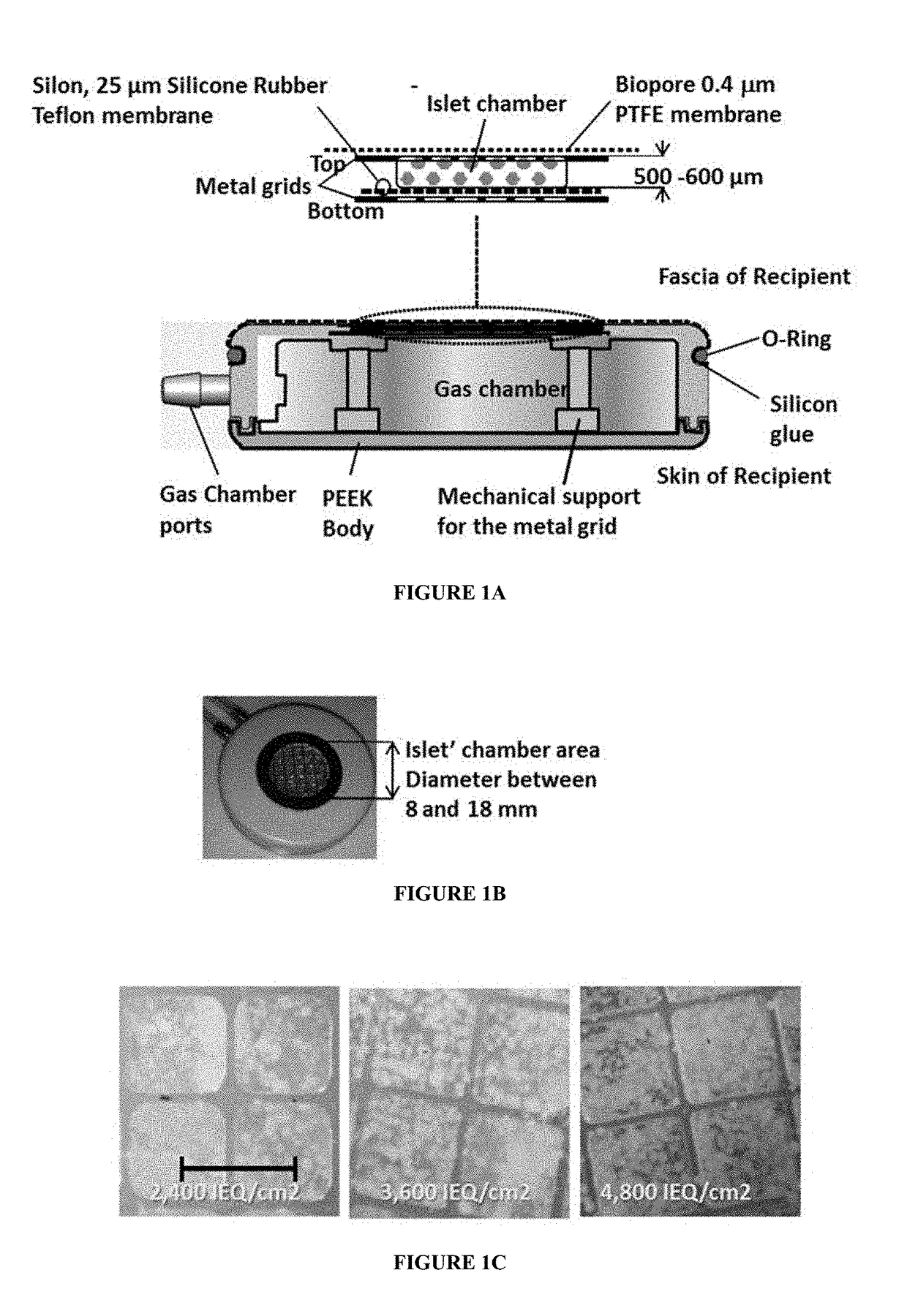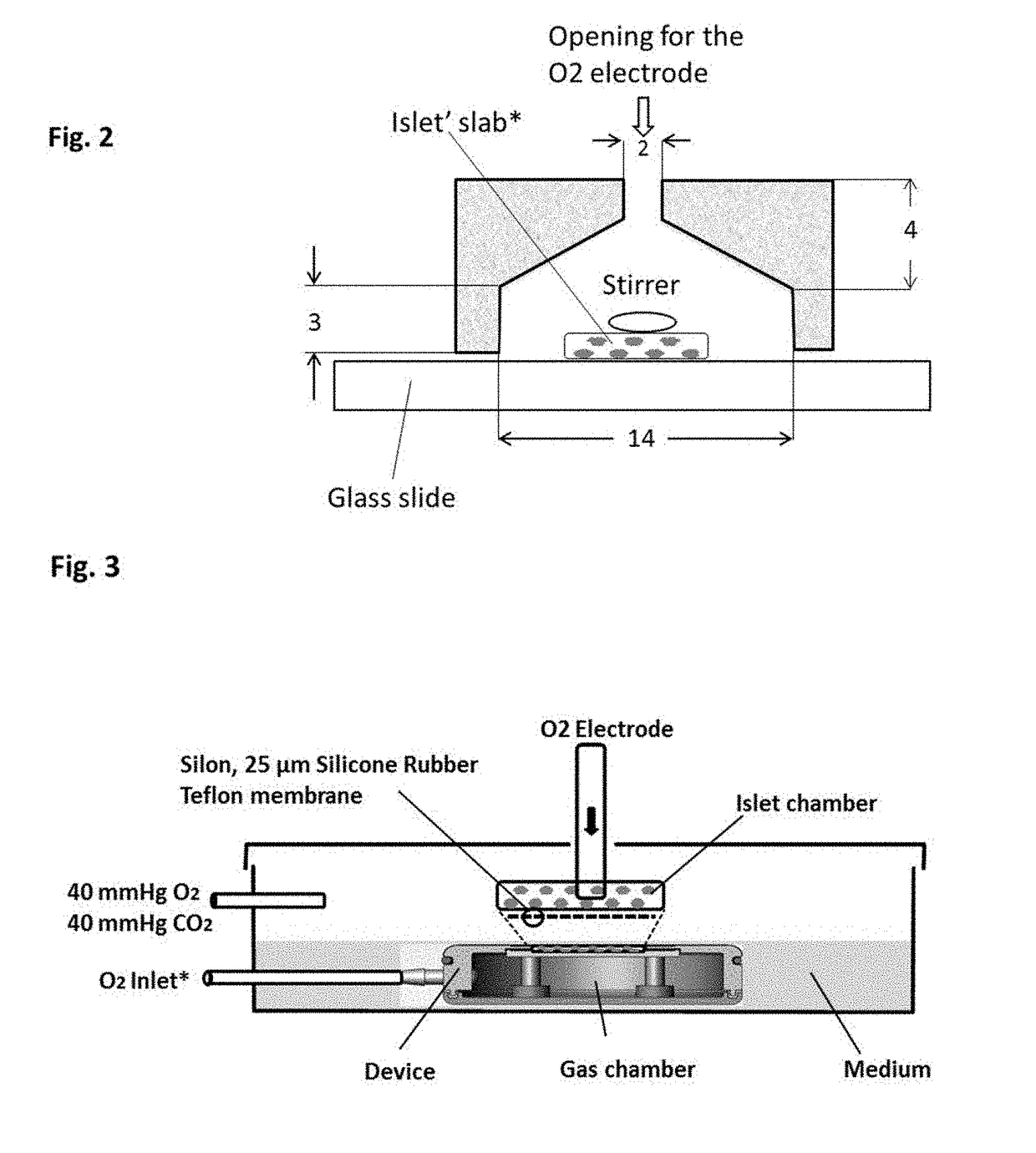Systems and methods for providing oxygen to transplanted cells
a technology of system and method, which is applied in the field of medical devices, cell therapies and medical devices containing cells, can solve the problems of limiting the diffusion of oxygen to the islets, affecting the survival rate of organ transplantation, and often not being a viable treatment hormon
- Summary
- Abstract
- Description
- Claims
- Application Information
AI Technical Summary
Benefits of technology
Problems solved by technology
Method used
Image
Examples
example 1
of Diabetic Rats with a Device According to Some Embodiments of the Present Invention
Materials and Methods
[0154]Animals, Induction of Diabetes, and Pre-Treatment:
[0155]Lewis rats (260-280 g) were purchased from Harlan (Rehovot, Israel), and diabetes was induced by a single intravenous infusion of 85 mg / Kg body weight of Streptozotocin (STZ; Sigma, Israel). Animals had free access to food at all times and were considered diabetic when non-fasting blood glucose exceeded 450 mg / dl for 4 consecutive days or more.
[0156]To prepare the diabetic animals for device implantation in a non-stressing, normal blood glucose environment, 1.5 capsules of a sustained release insulin implant (Linplant, LinShin, Toronto, Canada) were inserted under the skin of the diabetic animals, which were considered ready for implantation of the device when their non-fasted blood glucose was under 250 mg / dL for 3 consecutive days or more. The sustained release insulin capsules were removed 48 hr after implantation,...
example 2
of Diabetic Pigs with a Device According to Some Embodiments of the Present Invention
[0212]To support a large animal (e.g. mini-pig of about 10 Kg) a large device was constructed (Actual view in FIG. 13, cross-section view In FIG. 14). Diabetic pigs received devices of the present invention containing initial rat islets dose was about 6,500 IEQ / kg body weight (N=4 mini-pigs). The device was assembled according to the method described in Example 1.
[0213]FIG. 15 A shows the average blood glucose levels and weight in diabetic pigs following implantation. The data showed that initially, the blood glucose values were adjusted near normal. Squares indicate body mass (% of initial) and circles represent blood glucose (mg / dl). Pigs gained weight during the implantation period. These data show that that a low dose of rat islets (6,500 IEQ / kg body weight) implanted within the device can cure STZ mini-pig. Surprisingly, the device could support the pigs up to 80 days post-implantation. However...
example 3
ity of the Device According to Some Embodiments of the Present Invention to IgG and Insulin
[0215]FIGS. 17 A and 17 B show graphs of molecule transfer via the membrane of embodiments of the device of the present invention. The results of FIG. 17 A show insulin diffusion through the membrane (Teflon, 0.4 microns). Although the membrane was blocked using HM DM, insulin was still able to pass through the membrane. These data show that transfer rate of insulin was not affected by the membrane and the transfer rate of IgG is significantly hindered. FIG. 17 B further shows that insulin is able to cross the impregnated membrane (which includes islets / membrane / alginate) of the device, while blocking IgG antibodies (circles). An unimpregnated membrane (square—DM), i.e., without alginate, the IgG will cross through the membrane.
[0216]FIGS. 18A and 18 B show embodiments of the device of the present invention, showing virus protection. Cells with different virus loads were seeded on top of impre...
PUM
| Property | Measurement | Unit |
|---|---|---|
| Time | aaaaa | aaaaa |
| Thickness | aaaaa | aaaaa |
| Thickness | aaaaa | aaaaa |
Abstract
Description
Claims
Application Information
 Login to View More
Login to View More - R&D
- Intellectual Property
- Life Sciences
- Materials
- Tech Scout
- Unparalleled Data Quality
- Higher Quality Content
- 60% Fewer Hallucinations
Browse by: Latest US Patents, China's latest patents, Technical Efficacy Thesaurus, Application Domain, Technology Topic, Popular Technical Reports.
© 2025 PatSnap. All rights reserved.Legal|Privacy policy|Modern Slavery Act Transparency Statement|Sitemap|About US| Contact US: help@patsnap.com



